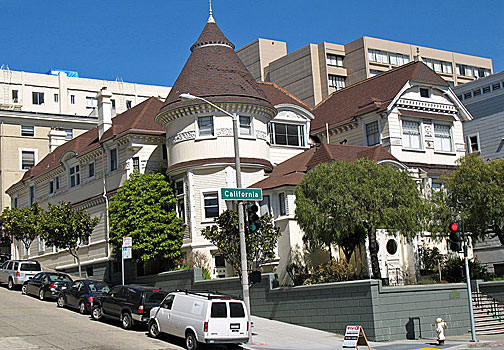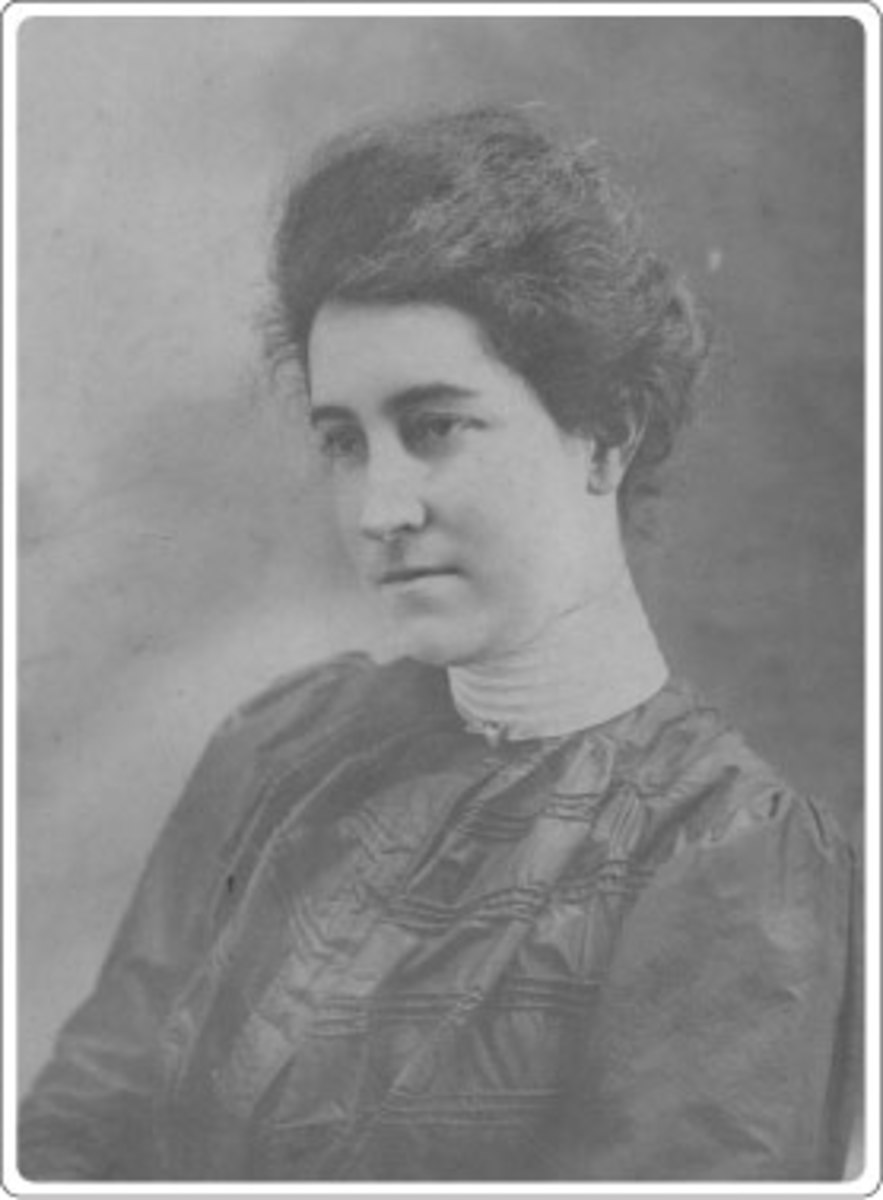- HubPages»
- Travel and Places»
- Visiting North America»
- United States»
- California
San Francisco Ghost House Stories: The Atherton Mansion

The nineteenth century is filled with stories of rugged frontiersmen who moved west in search of not only riches but also adventure. The times were exciting and there was a buzzing energy in the air all around. Everyone wanted to develop their own new lives within this period of intense change. Men from all up and down the east coast pushed the edges of their own boundaries as they moved out in development of the area.
Faxon D. Atherton was one of those men. Born in Massachusetts, he felt that urge to get out in to the world to see what else was out there. While many of his fellow frontiersmen were making their way west, he made his way south, traveling all the way to Valparaiso, Chile where he became an established tradesman. A man who refused all limitations, he traded not only hides and furs but also food and any other goods he could get his hands on. This independent spirit was a businessman at heart, and his trade business thrived.
In the course of his career, he finally did move to the West Coast, taking Dominga de Goni with him as his bride. She was the daughter of a wealthy family, a woman known for her striking appearance and outstanding charm. Like many good girls, she was interested in the bad boy pioneering spirit of Faxon D. Atherton. They moved to the Bay Area in 1860, and although the major gold rush was already over, Atherton had no trouble fitting his career in to San Francisco life. Rapidly, he became known as one of the richest men in the area.
Together, Atherton and his Chilean bride had seven children. However, domestic life failed to calm Atherton’s frontiersmen attitude. Known in the area for his womanizing tendencies and his affection for extra-marital affairs, Atherton could not bring himself to stay chained to the small realm of his family home. He traveled often in order to escape the confines of domestic life.
Atherton’s travels left his wife alone in their home much of the time. In order to efficiently run a household of seven children without the domineering hand of a father figure strongly in place, Dominga de Goni had to become a powerful woman in her own right. Though she could not control her husband’s philandering, she could take control of the situation in her own home and she did just that, ruling her large family with an iron fist.
Sometimes, Dominga’s combined sense of helplessness in relation to her husband and sense of power in relation to her children caused her to spin out of control. Most often, her son George was the subject of her bouts of cruelty. Though he escaped in to a fantasy world in which he emulated his father’s intense pursuits in to the world around him, George remained physically at home with his mother.
When Faxon D. Atherton passed away, Dominga decided to leave the home that they had lived in together in order to move in to the heart of the city. Using the resources culled from the melding of her wealthy family and her husband’s career in trade, she had built for her a home which came to be known as the Atherton Mansion. Located at the intersection of Octavia and California Streets, the Atherton Mansion was one of the most exquisite homes of the then-exclusive Pacific Heights neighborhood.
Living in the mansion with her was George who had failed to escape the restrictions of his mother’s domineering presence. In fact, he had managed to double the trouble by marrying a woman, Gertrude, who was strikingly similar to his mother. Gertrude was a writer who failed to make a career for herself as an author in part because her attitude was not conducive to creating the human connections necessary to thrive in the arts scene.
Indeed her attitude made it almost impossible for other authors to like her. She often failed to even meet people who could be essential to her career, such as Oscar Wilde who she opted not to be introduced to because she thought that he was an unattractive man. Even those people who Gertrude did become friends with quickly found that her controlling and backstabbing ways made it difficult to enjoy her. For example, she was friends with writer Ambrose Bierce until a time when he attempted to kiss her and, rather than evading the attempt quietly or dealing with it head on, she spent considerable time making fun of the situation amongst their friends until he no longer spent time with her. She also had problems with female authors due to an uncontrollable jealousy lingering in her heart for any success which they might have achieved. When Edith Wharton began gaining attention for her writing, Gertrude was quick to spread the rumor that Wharton had not been writing her own work, trying to stir up trouble in the literary world but ultimately only creating discomfort for herself in that society.
Despite her difficulties in the writing field, Gertrude pursued her career wholeheartedly. She and George had a daughter, but the daughter was sent to live with relatives so that Gertrude could spend her time writing. They also had a son but the son died when he was young and Gertrude opted not to have other children. A prolific writer, Gertrude finished more than forty novels. These novels speak to the heart of the situation in the Atherton home, as they feature as their main characters a series of fiercely independent women who control the world around them.
Gertrude may not have entirely controlled her own world, but she did her best to control her husband. She and George moved in to the Atherton Mansion and the two ladies of the home – Dominga and Gertrude - seemed to almost compete as to which could do a better job of completely controlling every move that George made. They humiliated him in public and dominated him in private.
In response, George withdrew even further in to his own imagination. In his fantasies, George stood up to his wife and mother, emulating his father’s strength and developing his own adventuresome life. Most often, he escaped only temporarily, to drink with friends at a nearby tavern before returning home to the control of the women. In 1887, in a decision made while drinking with friends, George decided to try to live out his fantasies of freedom. He escaped the fingernailed clutches of the dominant women in his life under the pretense of going to Chile to visit some friends. In his mind, the plan was to take after his father in setting up a life for himself thousands of miles away from his original home.
But alas, George simply lacked the frontiersmen attitude which had propelled his father on to worldly success. He hadn’t even reached Chile when he fell quite ill. His kidneys failed him and he died on the ship.
At the end of the nineteenth century, there was no option of turning the ship back and allowing for a proper burial of George Atherton. Doing the best he could, the captain of the ship ordered that George’s body be stored in a barrel of rum which would preserve it well enough to get it sent back home where the women of his life could do with George what they would, seemingly ending his life in the same way in which it had always been lived out.
However, in death, George may have found the will to live his way. The barrel containing his body returned to the Atherton Mansion without any description indicating the contents held within. The butler opened the barrel in an attempt to obtain rum for a family party, finding instead George’s rum-soaked body. Although the body was dried out and given a proper burial, George seems to have refused to leave the Atherton Mansion.
Shortly after his death, both of the women in the home began to have problems with his spirit. They would hear knocking on their bedroom doors, only to get up and find no one there. Frequently, they each felt that they were being watched by a cold, unsettling presence. Eventually, the women could bear these problems no longer. They sold the mansion and moved elsewhere.
Perhaps George was pleased to have finally taken control of the situation in the Atherton Mansion, because he did not follow the women when they left but instead appears to have stayed in the home. His knocking and the presence of cold spots throughout the home continued. Despite the monetary value of the Atherton Mansion and its prime location within San Francisco, tenants moved out almost as quickly as they moved in, made uncomfortable by the haunting presence of George Atherton.
But perhaps it just took another domineering woman to set George in his place, because in 1923 the mansion was purchased by a woman named Carrie Rousseau who managed not to be driven out by the odd occurrences. She lived in the home until her death in 1974. However, she lived only in the ballroom of the house which was taken over by her collection of at least fifty cats and the occasional odd assortment of boarders.
Upon Rousseau’s death, the Atherton Mansion was renovated and turned in to apartments. Whether or not George had stayed quiet for all of those years or simply couldn’t be heard above the mewing, his presence returned after Rousseau’s death. Tenants in the renovated building have heard his knocking and felt the cold spots throughout the old home. Some have reported gusts of wind passing through rooms which are not exposed to open windows and others have reported hearing arguing voices.
- Haunted San Francisco by Karen Stollznow
Ghost,Haunted San Francisco Ghost Tour research, Haunted Danger Zone, Haunting, Paranormal, Ghost hunters, Investigators, EVP, Phenomenon, Ghost's, Haunted America Tours is dedicated to helping and educating those interested or troubled by the parano - San Francisco Ghost Hunt
San Francisco Ghost Hunt including Atherton Mansion. - Haunted Bay - Atherton Mansion
The story of the haunted Atherton Mansion.




